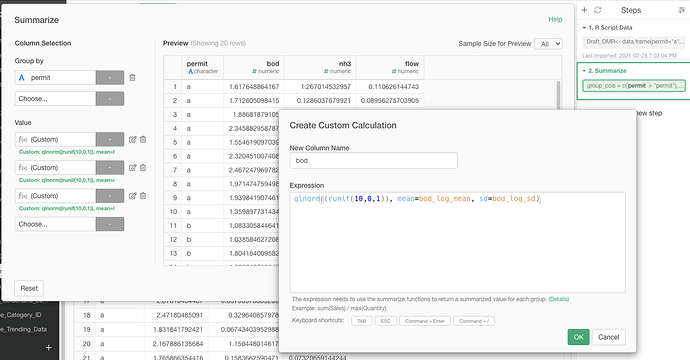We are working on a Monte Carlo simulation and have gotten to the point where we have a script that runs the simulation for one row of the following “Draft_DMR” data frame (top three have different permit numbers):
Here is the code for the R script data frame:
row=1
runs <-10000
permit <- Draft_DMR$permit[row]
bod_log_mean <-Draft_DMR$bod_log_mean[row]
bod_log_sd <- Draft_DMR$bod_log_sd[row]
nh3_log_mean <- Draft_DMR$nh3_log_mean[row]
nh3_log_sd <- Draft_DMR$nh3_log_sd[row]
flow_log_mean <- Draft_DMR$flow_log_mean[row]
flow_log_sd <- Draft_DMR$flow_log_sd[row]
sims <- data.frame("permit" = permit,"bod" = qlnorm((runif(runs,0,1)), mean=bod_log_mean, sd=bod_log_sd), "nh3" = qlnorm((runif(runs,0,1)), mean=nh3_log_mean, sd=nh3_log_sd),"flow" = qlnorm((runif(runs,0,1)), mean=flow_log_mean, sd=flow_log_sd))
sims
This script outputs a nice data frame for the specified row (all have the same permit number).
The thing is we have 500+ permits (rows) to run this script for, and I would appreciate some direction relative to iterating this process? In my limited research, it seems that something from the apply() family of functions might come in handy here?
Thanks in advance!



